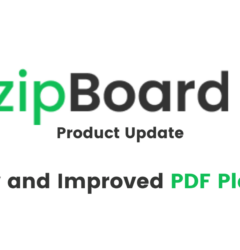The Ultimate Guide to Asynchronous Content Reviews: Benefits, Tools, and Best Practices for Digital Teams
06 Oct

Table of Contents
ToggleAsynchronous communication is an essential part of a team’s collaboration strategy today- given the remotely distributed teams working in different time zones. With the availability of numerous cloud-based tools, supporting written and recorded communication is easier and accessible for all.
Say, you’ve set up your content review process. But there are multiple mediums to have them reviewed. We obviously want a medium that is most convenient to us and our team. More and more teams are embracing asynchronous content review. Especially for their interactive digital contents – with the help of contextual and visual tools available.
If you are building complex interactive digital content, we are here to discuss how adopting asynchronous content reviews can make your team communicate more effectively and efficiently.
What are asynchronous content reviews?
Asynchronous is a term referred to when something does not happen at the same time. An asynchronous content review, simply means that two people who are reviewing any digital content do not have to be simultaneously logged in to review or share feedback on content. It works best for scenarios where stakeholders can communicate and share feedback in their own time without needing to jump on a call right away.
Teams increasingly communicate asynchronously using messaging tools, emails, slack or teams channels, notes etc. In the case of asynchronous content reviews, that communication happens on top of the digital content being reviewed.
Google doc is a tool for asynchronous content reviews that lets stakeholders share feedback on document-based content.
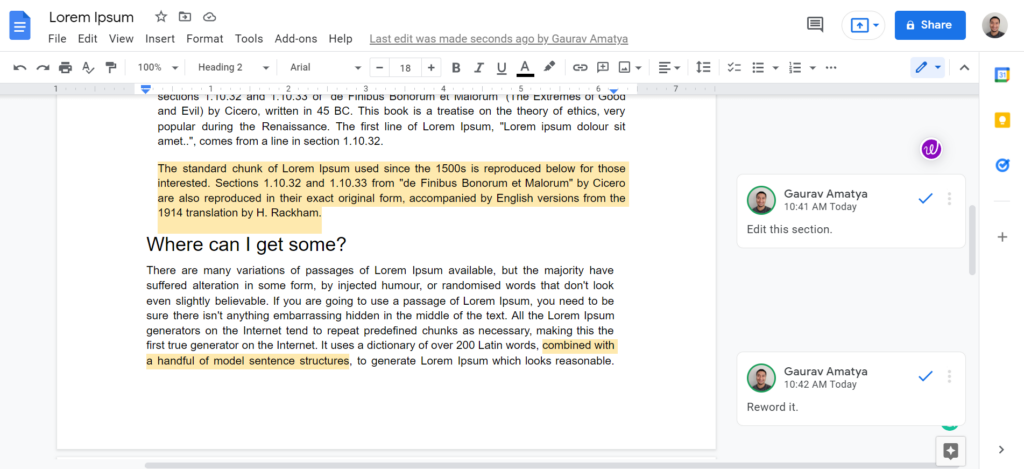
Communication in a slack channel discussing a specific software functionality is a good example of communication over a few days without having to log in simultaneously.
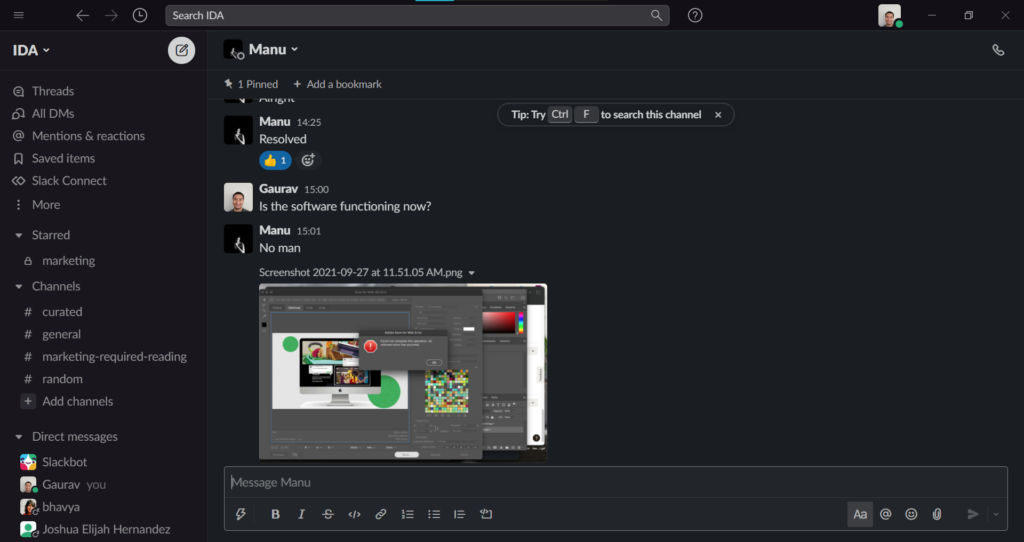
Before we start on asynchronous content review, first let’s touch on some of the challenges of synchronous content review and QA. This will give us a better understanding of the current situation.
Challenges of Synchronous Content Review
- Time zone differences – Due to time zone differences, finding overlapping hours online becomes increasingly difficult. You may need to meet with some employees during non-working hours, especially if your company has an international workforce. This can negatively impact their work-life balance.
- Stress and decreased productivity – When employees feel they need to reply to every form of synchronous communication they receive as soon as they receive it, they lose the uninterrupted chunks of time they need to do deep, meaningful work. Keeping in touch and responding promptly while also managing work priorities is a constant source of stress. An estimated 90 minutes per day are spent engaging in instant messaging and unnecessary productivity apps. That’s an hour and a half of lost productivity.
- Tendency to react without reflection – We often act on emotion instead of thinking clearly about the words or tone we use. In addition, the fastest speaker may be the only one heard, leaving others whose native languages aren’t used in the team to be left unheard. This can be a major problem especially for design projects where miscommunication can be rife with quick decisions. Make sure to adhere to the best practices when managing design projects.
Now let’s dive into the benefits of asynchronous content reviews and how it solves these pain points.
Benefits of asynchronous content reviews
Asynchronous content reviews are often beneficial for remote teams building content at scale, but they can also benefit teams in the same office. The overall benefits will directly align with your content marketing strategy.
The top reasons why asynchronous content reviews help content teams get more efficient are listed below:
Asynchronous content reviews create flexibility
Teams and especially leaders are faced with the increasing demands of being involved in numerous meetings. During meetings with multiple participants, the need to discuss every detail tends to eat into the focus time needed to work on building and evaluating content. While not all communication can be replaced by asynchronous communication, a good part of the content reviews can be done asynchronously without having to dial in at the same time.
Nonsynchronous communication is great for focused reviews
Most content reviews need focused attention to go through the entire content the same way as the user will consume it- without interruption. When content reviews are done over zoom calls or synchronous connections, the reviewer does not see the content as a user and is merely guided through it. Also, it is hard to focus on the specifics of the content by going through it at someone else’s pace.

While some brainstorming discussions around the content can be done in synchronous meetings, managing content reviews asynchronously helps find focus. This also helps free up time for all the stakeholders involved to work at their own flexible time.

The overall value of zipBoard comes from efficiently gathering feedback from our QA team and other stakeholders. This is very important because we want to ensure quality but at the same time, if we had to collect the feedback in another way and coalesce them, this would take time and effort that zipBoard makes easy for us. So it’s very valuable.
John Just
KnowBe4' Senior VP of Learning Innovation
Levels the playing field for the team
Reviewing creative content is hard. It becomes harder when the one reviewing isn’t the most vocal or struggles to voice out opinions in front of others. No matter how hard we try, in-person and synchronous meetings are usually dominated by the loudest and most senior voices.
By using asynchronous discussion platforms, such as Slack, Microsoft Teams, Google Docs, or even email, it’s easy for everyone to contribute to the discussion and be heard. Your team members who are a bit shy, who primarily speak in a second language, or who want to collect their thoughts may find asynchronous collaboration quite beneficial.
Leaves a trail for future review
Most of us keep a to-do list to keep us organized and help us remember the important stuff as time goes by. Asynchronous content reviews provide you with these same perks.
Especially when you’re collaborating on creative content, having different versions for each file/iteration can be beneficial for the entire team. But versioning can be a real pain when you’re not using the right tools.
Asynchronous communication platforms enable a level of transparency that synchronous communication does not. Unless someone is always taking detailed notes or you’re recording every meeting and call. Decisions can be communicated easily via team messaging or project management apps. And these works are automatically recorded and archived. This provides a high level of detailed record-keeping that can be used for the analysis and optimization of workflows regularly.
Webinar
Build your content review and QA process
See how you can organize your QA process to build a robust and adaptive content review process.
Watch free webinarImplementing asynchronous content review
There are multiple channels/platforms through which you can implement content reviews asynchronously. Certain tools are must use if you’re to collaborate asynchronously such as doc files and an online drive. But the ways to exchange this information can vary significantly.
The different ways you can go about this are by either using a bunch of different mediums such as email, team messaging app, screen-share meetings, etc. Or by using a centralized review tool such as zipBoard to connect all the dots. More on that later. First, let’s touch on the different tools used for asynchronous communication.
zipBoard
Keeping track of feedback scattered across emails, messages, and calls can be overwhelming. zipBoard solves this by providing a centralized platform for asynchronous content reviews.
Whether you’re working on text documents, PDFs, images, videos, live websites, or SCORM content, zipBoard helps you consolidate everything in one place.
Its collaborative environment supports role-based task management, ensuring each team member knows their responsibilities. This clear structure eliminates confusion, making online proofing seamless and efficient.
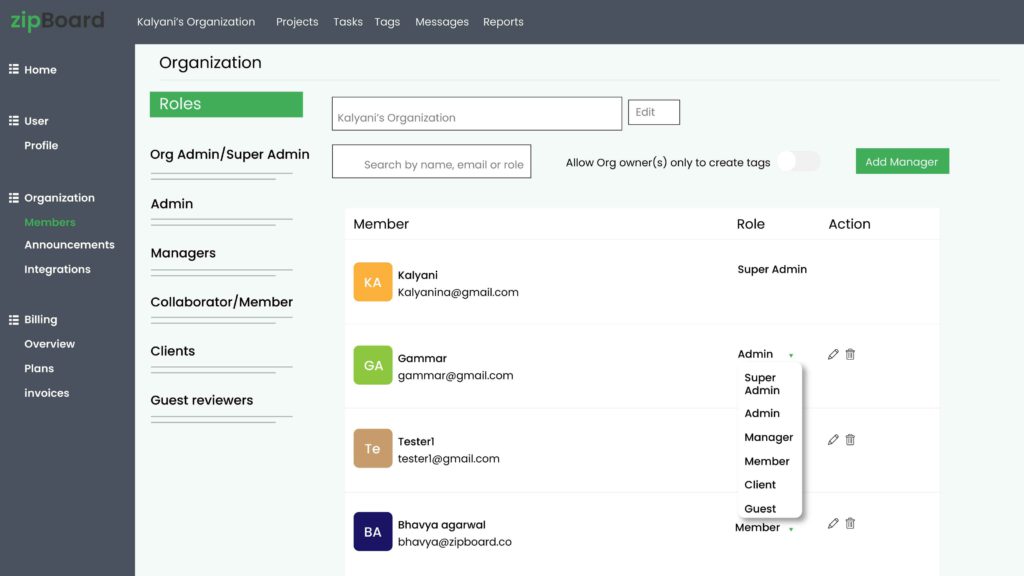
With zipBoard’s review system, you can:
- Assign Tasks: Ensure tasks are assigned to the right stakeholders.
- Add Watchers: Keep team members updated on task progress.
- Manage Roles: Clearly define permissions for reviewers, managers, and clients.

The result? A streamlined process that ensures all client requirements are met through comprehensive feedback collection and task resolution.
Reviewing a website in zipBoard
A first-generation asynchronous communication tool, no list of asynchronous tools can be complete without email. Emails were the first mode of asynchronous communication, propagating the way for other new-age tools. However, with time and new development, this tool has fallen a bit behind as far as the asynchronous content review goes.
More and more stakeholders are getting involved in the review process. Team members, clients, owners, managers, subject matter experts, and other stakeholders are all involved in the review process for creating content these days. And cc’ing them in each strand of a mail and then keeping up with each of their reviews is beyond hectic and cumbersome, to say the least.
That’s before we even begin talking about visual/live web content, screen recordings, annotations or different versions of the same file. And this is where zipBoard comes in!
Slack
Slack is a team communication app and is perfect for asynchronous communication. They profess to, “eliminate off-the-clock distractions and carve out focus time.” Having used them ourselves for our daily work life, we can positively say that it builds culture, rapport, and a sense of belonging. This can be crucial for remote teams. But more importantly, it is an apt choice for people looking to enable spontaneous remote collaboration in their team.
One downside would be that it is more suited for general asynchronous communication than the content review. It also allows adding a status which comes in handy as your team can get to know your status without having to mention it explicitly.
Google Workplace
Also known as G Suite. It is a collection of cloud computing, productivity and collaboration tools, software and products developed by Google. This includes Gmail, Drive, Docs, Sheets, Slides, Forms, Calendar, and all the other tools from Google that are available to you for free via this menu.
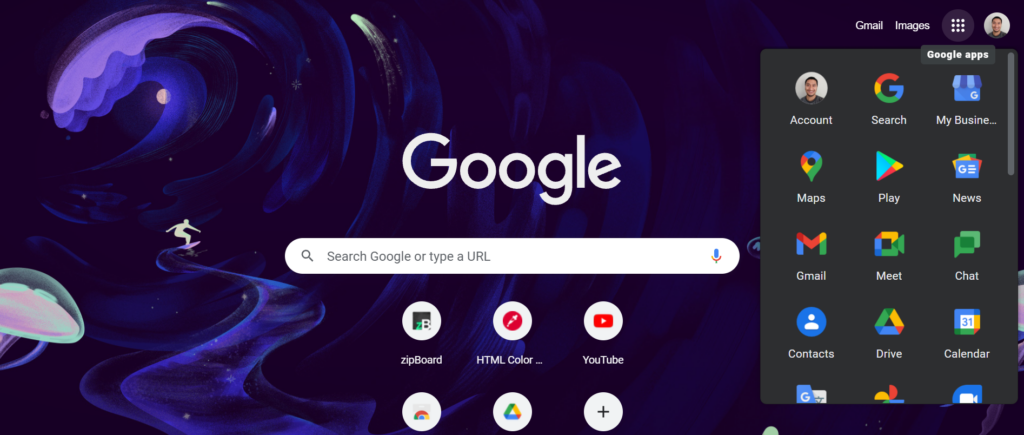
There are other apps too that are behind a paywall. But the ones you’ll be needing the most for asynchronous content review is Google Doc and Drive.
Google docs are the life and blood of our company and we staunchly believe it to be true for most remote/hybrid teams in this day and age. It does a good job mimicking MS Office which makes the transition from one tool to another seamless. Google docs are apt for basic asynchronous content review as it allows one to comment, suggest and share it with multiple people as you like.
The other useful app here is Google Drive. Which is one of the best examples of asynchronous file sharing. The software lets you work on documents, spreadsheets, presentations, and more at your convenience at separate locations and times. Google Doc is never complete without Google Drive and vice versa.
Webinar
Struggling with Building Your Content Review and QA Process?
Watch our free webinar on building a content review and QA process. Discover how to collaborate efficiently with stakeholders, clients, and managers with a content review process.
Watch free webinarThe Best Asynchronous Content Review Tool to Streamline Your Review Workflow
zipBoard is a powerful visual review and proofing tool designed to simplify content collaboration. Its intuitive markup and annotation tools allow teams to review multiple types of digital content within a single project, centralizing both reviews and tasks.
With zipBoard, you can:
- Visual Markups: Use advanced annotation tools for images, videos, documents, and web content.
- Centralized Reviews: Bring all your content reviews and tasks into one platform.
- Seamless Collaboration: Empower your team with a user-friendly proofing experience designed for fast, focused feedback.
Think of zipBoard as the essential link connecting all aspects of your content development, making collaboration effortless and productive.
Review Content Anytime, Anywhere with zipBoard
Centralize feedback, streamline approvals, and collaborate effortlessly—no meetings required. Start your free trial today or book a personalized demo to see how zipBoard can transform your content review process.
Book DemoStart Free TrialYou don't have to take our word for it...

” Zipboard has been amazing for quickly being able to point out complex or difficult to explain changes that need to be made on our website. Rather than write up a small book I can quickly use the provided tools to visually capture the problem and point, encircle, and write a note connected to the needed changes. It has saved us so much time and increased productivity. Highly recommend. “
Nathan Williams
Marketing Director at Best Practice Medicine

” The overall value comes from efficiently gathering feedback from our quality assurance team and any other stakeholders. This is very important because we want to ensure quality but at the same time, if we had to collect the feedback in another way and coalesce them, this would take time and effort that zipBoard makes easy for us. So it’s very valuable. “
John Just
KnowBe4’s Senior VP of Learning Innovation

” Implementing zipBoard into our development process has taken the team from using antiquated manual processes to an easy to use, globally accessible, online process. The application is flexible in how projects are set up and managed. zipBoards environment allows multiple projects to be set up and managed uniquely; where other tools force a specific method for everything. “
Beth Epperson
QA Manager - ELM Learning
Frequently Asked Questions
Asynchronous content refers to any material that can be created, shared, and consumed at different times by different people. It allows users to engage with the content at their convenience, independent of real-time interaction. Examples include videos, articles, reports, and recorded presentations.
Yes, asynchronous typically means no live video calls like Zoom. Instead, communication happens through tools like project management platforms, email, or annotation software, where participants collaborate at different times.
An example of asynchronous communication is a team reviewing a marketing video. The creator uploads the video, and team members leave comments and suggestions using a review tool like zipBoard. They do this at their convenience, without needing a live meeting.
Asynchronous content review is the process of evaluating and providing feedback on content without requiring real-time interaction. Reviewers can access, review, and comment on content at their own pace using collaborative tools.
Asynchronous feedback is feedback provided at a different time from when the content is shared. Reviewers can give their input whenever it suits them, eliminating the need for live discussions. This method is common in content reviews, e-learning, and remote collaboration.
Synchronous reviews happen in real time, often involving live meetings or calls. Asynchronous reviews, on the other hand, let participants review content independently, allowing for more thoughtful feedback and accommodating different time zones.
Some of the best tools for asynchronous content review include:
- zipBoard: For visual reviews, annotations, and task management.
- Trello/Asana: For project tracking.
- Google Docs: For collaborative text editing.
- Loom: For sharing video-based reviews.
To implement asynchronous content review:
- Choose the right tool: Use a platform like zipBoard for seamless reviews.
- Define roles and deadlines: Assign tasks and set clear timelines.
- Share clear instructions: Provide context and review guidelines.
- Centralize feedback: Keep all comments and updates in one platform to avoid confusion.
- Follow up: Review feedback and implement changes systematically.
Author’s Bio:
Bhavya is the co-founder & CEO for zipBoard. Bhavya has worked on multiple aspects of building a SAAS product from scratch. She drives the growth and development of zipBoard and leads a small team to deliver a robust and innovative collaboration solution for web developers and designers.
Gaurav is a SaaS Marketer at zipBoard. While earning his degree in CSE at KIIT, Bhubaneswar, he rediscovered his inner love for creativity as he got into his first social internship. If he isn’t busy working, you can find him around his friends/family or enjoying a good football match or a passionate discussion over it, whichever works.
Related Post
Recent Posts
- Best Practices for Efficient Document Reviews and Collaboration December 18, 2025
- MEP Document Management: How to Streamline Reviews & Avoid Rework October 3, 2025
- What Is Online Proofing Software? And Why Content Review Breaks Without It July 11, 2025
- How Laerdal Medical Cut eLearning Review Time by 50% with zipBoard’s Visual Review Tool July 9, 2025
- Why Your Team Needs a Content Feedback System (Not Just Comments in Docs) May 28, 2025
©️ Copyright 2025 zipBoard Tech. All rights reserved.


